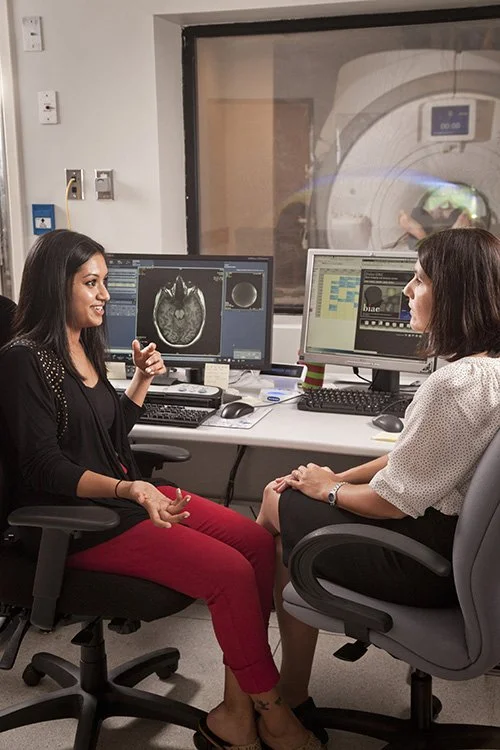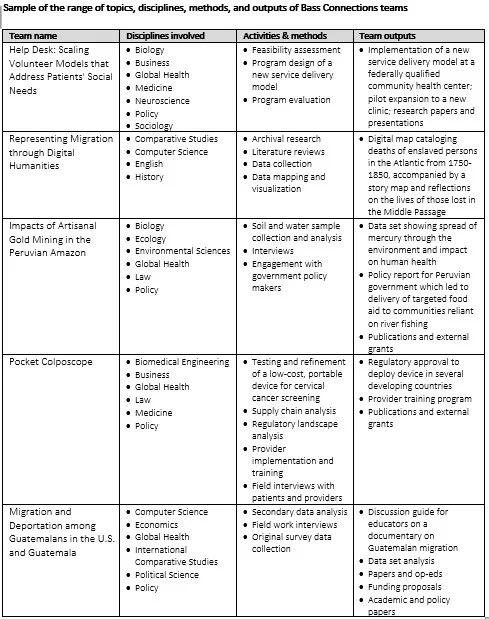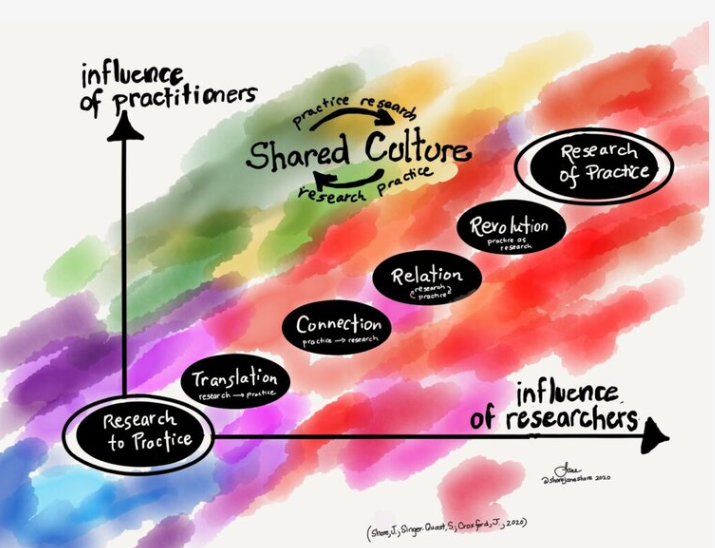Research Methods and Creative Outputs from Interdisciplinary Teams
In February we are featuring Bass Connections as part of an exploration of research that crosses boundaries. Laura Howes, Director and Edward Balleisen, Vice Provost for Interdisciplinary Studies introduced Bass Connections in a Methodspace interview.
By Laura Howes and Edward J. Balleisen
Interdisciplinary research teams combine multiple approaches to question-framing, research methods, and modes of analysis, often in new ways. When this complex type of inquiry works well, it generates fresh perspective, new knowledge, and innovative outputs.
The Bass Connections program at Duke University provides a framework for interdisciplinary research teams and supports the effective operations of these teams – but importantly, the program does not mandate how teams will conduct their research nor stipulate how teams define intellectual objectives.
Indeed, when we, as program leaders, receive queries about what success looks like for a team, our retort is always that we provide teams the freedom to define their goals – and we also acknowledge that sometimes with open-ended inquiry, “success” may be testing a new idea or conceptual approach only to learn that it does not furnish a viable research path. Instead, our biggest programmatic goal is to prevent failures to achieve research goals because team structure or group dynamics and culture become dysfunctional.
Bass Connections students discuss brain images as part of their project.
Through this open approach to methods and outcomes, Bass Connections invites faculty team leads to partner with students in developing a research plan that draw on multiple disciplines to address a societal challenge. Often, teams identify a set of target outputs and outcomes at the beginning of their work, but we frequently observe that teams change course as they adapt to unexpected roadblocks, input from community partners, and evolving insights from team members.
While many Bass Connections teams produce unambiguously academic research outputs (peer-reviewed journal articles, conference presentations, grants), the applied and interdisciplinary orientation of the program also encourages a creative range of public-facing outputs, including:
A few examples from the many outputs inventoried on our website suggest the inventiveness of students and faculty in translating their research findings and arguments. Comprised of faculty and students from statistics, neuroscience, psychology, public policy, law, and political science, one multi-year team, Mental Health and the Justice System in Durham County, has partnered with the Sheriff’s office and detention center in Durham County, North Carolina (where Duke University is located), and local criminal justice organizations, to improve the interaction between the criminal justice system and people with mental illness and substance use disorders. By combining health data and detention center data, the team has more clearly mapped the strong connection between mental health disorders and arrests and recidivism. They have also identified critical windows in which overdoses are most likely to occur following a jailing. Their work has resulted in publications, policy proposals, and extensive changes in practice within the Durham county justice system. Read more about this team’s research methods and preliminary findings.
The Arts and the Anthropocene team set out to fuse science and art to educate the public and provoke action on climate change. The team developed two StoryMaps to explain and illuminate the Science of Sea Level Rise and Local Impacts of Sea Level Rise in NC and created Spectral Seas, an art installation depicting the scale of future sea level rise. Woven out of over 400 plastic bags collected from the Durham community, the tapestry features layers of color representing different sea level rise predictions for 2100.
Project Examples
This table provides additional examples of interdisciplinary projects, detailing disciplinary contributions, research methods and activities, and key outputs.
Learn more about each project example here:
Help Desk: Scaling Volunteer Models that Address Patients' Social Needs
Migration and Deportation among Guatemalans in the U.S. and Guatemala
After nearly a decade, Bass Connections has supported close to 500 interdisciplinary teams and engaged more than 4,000 faculty, students, and staff. We invite you to explore our archive of past projects, which document the breadth of research undertakings, team outputs, and community engagement.












The Director and Assistant Director of the Bass Connections program at Duke University share lessons learned and open access resources for team success in interdisciplinary collaborative research.